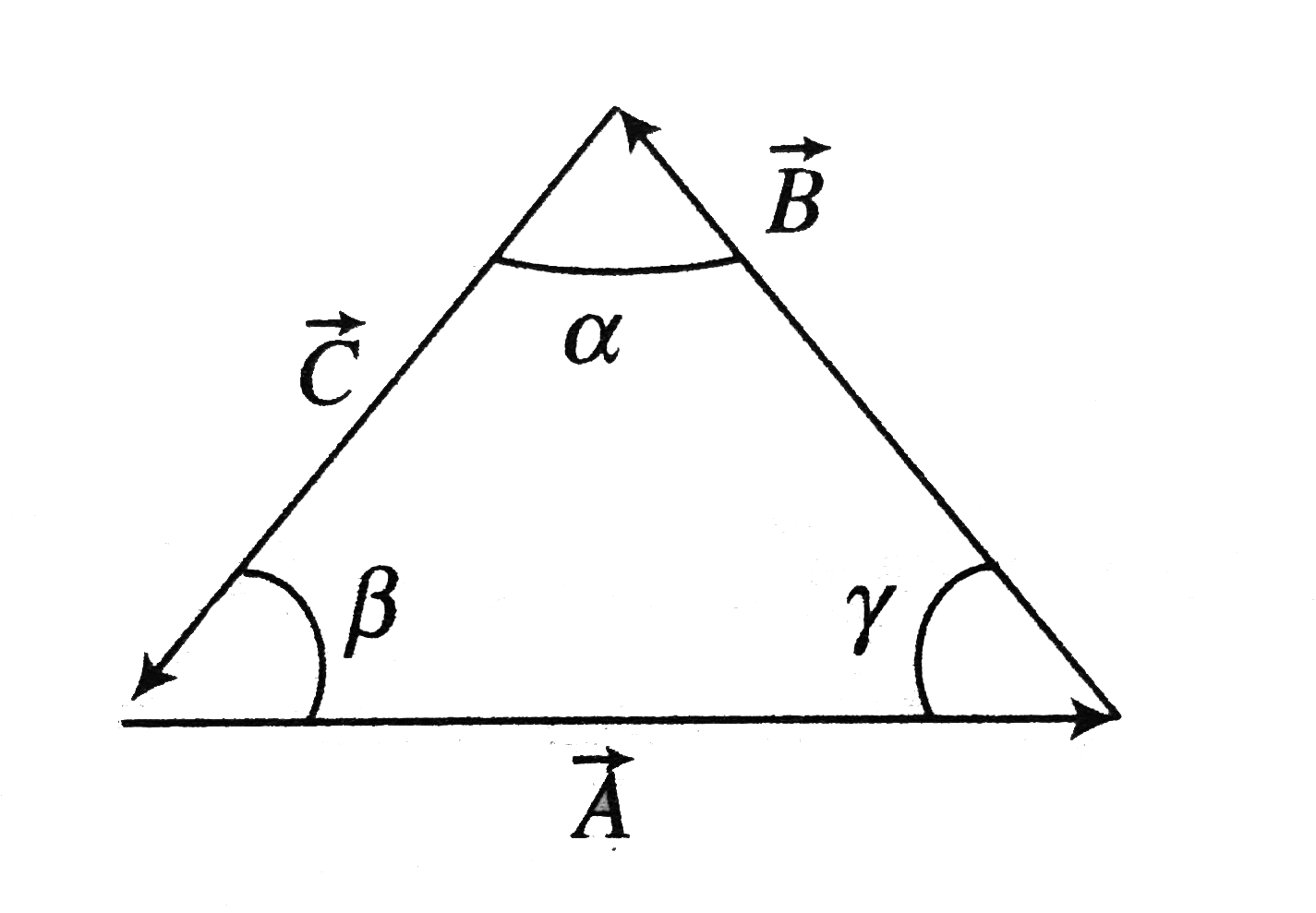Given that →A+→B+→C=→0. Out of three vectors,two are equal in magnitude and the magnitude of the third vectors is √2 times that of either of the two having equal magnitude. Find the angles between the vectors.
Given

A=B,C=√2A=√2B.
From (figure) α=β and α+β+γ=180∘
⇒γ=180∘−2α
Apply Lami's theorem: Asinα=Csinγ
⇒Asinα=√2Asinα(180−2α)
⇒1sinα=√2sin2α
1sinα=√22sinαcosα⇒cosα=1√2⇒α=45∘
⇒β=45∘ and γ=180∘−2α=90∘
Angle between →A and →B=180∘−γ=90∘,
Angle between →B and →C=180−α=135∘,
Angle between →C and →A=180∘−β=135∘.
Topper's Solved these Questions
- VECTORSBOOK - CENGAGE PHYSICSCHAPTER - VECTORSEXERCISE - Exercise 3.1
19 Videos
- VECTORSBOOK - CENGAGE PHYSICSCHAPTER - VECTORSEXERCISE - Exercise 3.2
13 Videos
- TRAVELLING WAVESBOOK - CENGAGE PHYSICSCHAPTER - TRAVELLING WAVESEXERCISE - Integer
9 Videos
- WORK, POWER & ENERGYBOOK - CENGAGE PHYSICSCHAPTER - WORK, POWER & ENERGYEXERCISE - Archives (integer)
4 Videos
Similar Questions
Given: →a+→b+→c=0. Out off three vectors →a,→band→c two are equal in magnitude. The magnitude of third vector is √2 times that of either of the two having equal magnitude. The angle between vectors is
View SolutionTwo vectors, both equal in magnitude, have their resultant equal in magnitude of the either. Find the angle between the two vectors.
View Solution
Knowledge Check
given that →A+→B+→C=0 out of three vectors two are equal in magnitude and the magnitude of third vector is √2 times that of either of the two having equal magnitude. Then the angles between vectors are given by
A30∘,60∘,90∘B40∘,45∘,90^@C45∘,60∘,90∘D90∘,135∘,135∘Given that →A+→B+→C=0, out of three vectors two are equal in magnitude and the magnitude of third vector is √2 times that of either of two having equal magnitude. Then angle between vectors are given by
A30∘,60∘,90∘B45∘,135∘,150∘C90∘,135∘,150∘D90∘,135∘,135∘Given that P+Q+R= 0. Two out of the three vectors are equal in magnitude. The magnitude fo the third vector is s √2 times that of the other two. Which of the following can be the angles between these vectors?
A90∘B45∘,45∘,90∘C30∘,60∘,90∘D45∘,90∘,135∘
Two vectors, equal in magnitude, have their resultant equal in magnitude of the either. The angle between the two vectors is _____.
View SolutionTwo vectors →a&→b have equal magnitudes of 10 m ,. Find the magnitude and direction of the resultant vector .
View SolutionFind the magnitude of two vectors →a and →b having the same magnitude and such that the angle between them is 600 and their scalar product is .
View SolutionTwo vectors, both equal in magnitude, hav. e their resultant!! !equal in magnitude of the either vector. Find the angle between the vectors.
View SolutionTwo vectors →A and →B have equal magnitudes. If magnitude of →A−→B is equal to (n) times the magnitude of →A−→B, then angle between →A and →B is ?
View Solution
